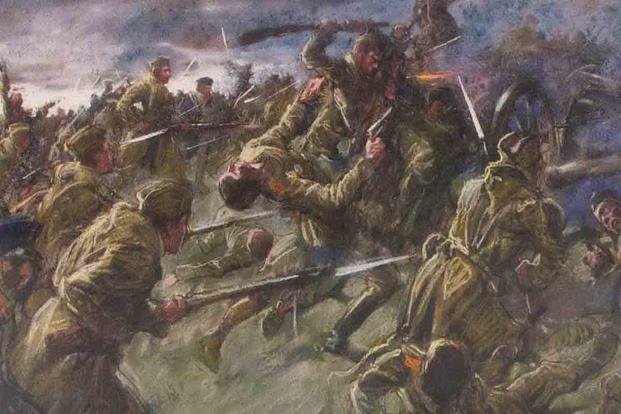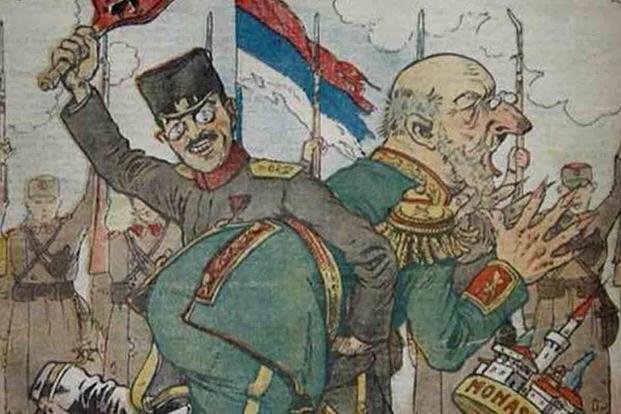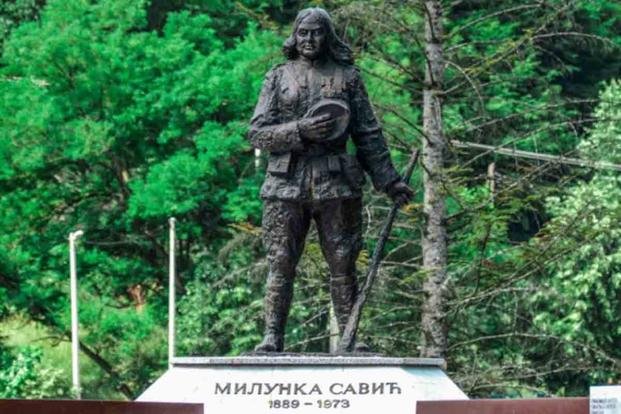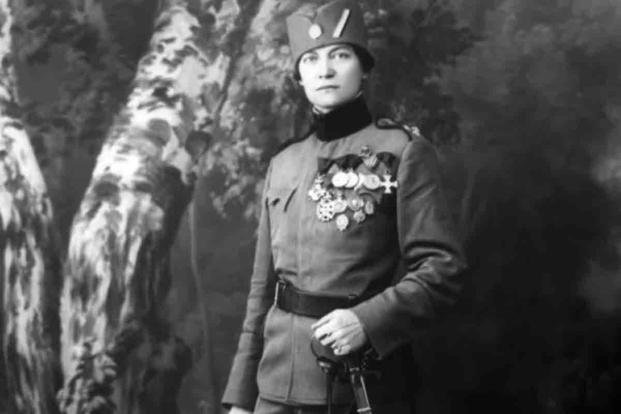In 1912, the nations of the Balkans joined together to kick the Ottoman Empire out of Europe, end its influence in their countries and free the people living in those territories from Ottoman rule. Spoiler alert: They were wildly successful, but only after raising a combined army of more than 750,000 men. And at least one woman.
The Serbians had to call up 255,000 men, almost 9% of its total population at the time, so the army went far and wide to find conscripts. In the tiny village of Koprivnica, it called up Milunka Savić’s brother, who was suffering from tuberculosis.
This region of Serbia just happened to be known as a hotbed of Serbian patriotism, so the Savić family wasn’t about to shirk its duty just because of a deadly lung infection. Milunka Savić cut her hair, donned a uniform and set out in her brother’s place as Milun Savić, which was a great ruse considering her village only had 20 people in it.

Savić probably didn’t know she was about to set out on a seven-year rampage of destruction across two continents in three wars, but she was definitely willing to try.
The Serbians were divided into four groups, the bulk of which fought the Ottomans’ western army near Novi Pazar, right outside of Savić’s home village. At just 24 years old, she joined the Iron Regiment, which saw action almost immediately at the Battle of Kumanovo, the first major battle of the war, on Oct. 24, 1912.
When the Ottoman commander realized the Serbs weren’t ready at Kumanovo, he just attacked. Despite the surprise, the Serbs put such a beating on the Turks that the entire Ottoman offensive had to be scrapped, and they retreated from the area altogether.

The Serbians forced the Ottoman Army into a pocket from which it couldn’t escape, laid siege to Shkodër alongside their Montenegrin allies and occupied northern Albania until the war ended. After seven months, the Turks were essentially kicked out of Europe. Savić must have learned a lot from this first war, which was a good thing, because the next one came pretty quick.
Unhappy with how the spoils of war turned out for Bulgaria, Bulgaria turned on the rest of its former allies. It was a bad call. Not only did Montenegro, Greece and Serbia have veteran armies by then, Romania and the Ottoman Empire wanted a piece of Bulgaria, too.
The Iron Regiment was sent to Bregalnica in July 1913. In what turned out to be the largest battle of the Second Balkan War, nearly hundreds of thousands of Serbians clashed with Bulgaria’s finest.

The Bulgarians’ plan was to surprise the Serbian Army, which, as we know, is a bad move. They tried to overpower the middle of the Serbian lines, which just happened to be Savić’s regiment. Savić’s superpower, it turns out, was lobbing grenades at enemy offensives, and she did it over and over at Bregalnica, running right into a charging army 10 times. For her trouble, she received her first medal for valor and a grenade to the chest.
Taken to the field hospital for shrapnel wounds, this is where Serbia’s army discovered her secret. But they didn’t give her a discharge; they gave her a promotion. This worked out for the Serbians, because they got the heroine they didn’t know they needed for the upcoming world war.
Riding high on back-to-back war victories, the Serbians were convinced that Bosnia and Herzegovina belonged to them, not the Austro-Hungarian Empire, which annexed it in 1908. Archduke Franz Ferdinand visited Sarajevo in 1914, where he became history’s most legendary gunshot victim, which led to World War I.
Austria marched a massive force right to Serbia, where the Serbians promptly handed them their fourth point of contact over and over. Savić fought at Cer, where the undersupplied and outnumbered Serbians gave the Allies their first victory over the Central Powers. Their next meeting came at the Kolubara River.
At Kolubara, Savić charged across No Man’s Land with two bandoliers of grenades and her standard-issue rifle. After single-handedly clearing an Austrian trench with those grenades, she ran to the next one, where 20 enemy soldiers surrendered. After sending the prisoners back, she assaulted another trench with grenades. She didn’t stop until shrapnel from an artillery shell hit her in the head.

For her gallantry at Kolubara, she received the highest medal Serbia could bestow, the Karadjordje Star with Swords. Austria lost the battle and was forced to withdraw from Serbia, tail between its legs. Milunka Savić’s career wasn’t over. Serbia was surrounded by enemies Bulgaria, Austria, Germany and the Ottoman Empire, and Savić fought them all.
In 1916, she earned another Karadjordje Star with Swords for cleaning trenches full of Bulgarians by chucking grenades at them, even managing to capture 23 prisoners. The Serbians couldn’t hold out against all of its enemies and were forced to retreat across Albania. They were picked up by the French and Italians and joined the French Army of the Orient to continue the fight.
Savić was wounded a total of nine times over the course of her three wars. She was also awarded 12 medals, including two French Legions d'Honneur, Russia’s Cross of St. George, the British Medal of the Order of St. Michael, the Serbian Milos Obilic Medal, and she was the only woman in all of World War I to receive the French Croix de Guerre.

As a recipient of the Legion d'Honneur, France offered to set her up in Paris with a home and a nice pension after the war, but she did not want to leave Serbia. Instead, she became a factory worker, cook, nurse, janitor and, during World War II, ran a hospital for partisans. She died in Belgrade in 1973, still the most decorated female combatant in history.
-- Blake Stilwell can be reached at blake.stilwell@military.com. He can also be found on Twitter @blakestilwell or on LinkedIn.
Want to Learn More About Military Life?
Whether you're thinking of joining the military, looking for post-military careers or keeping up with military life and benefits, Military.com has you covered. Subscribe to Military.com to have military news, updates and resources delivered directly to your inbox.
















